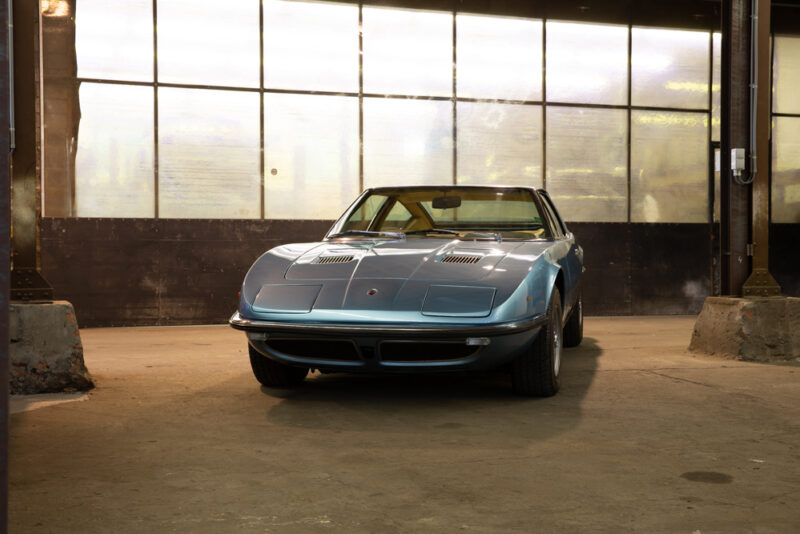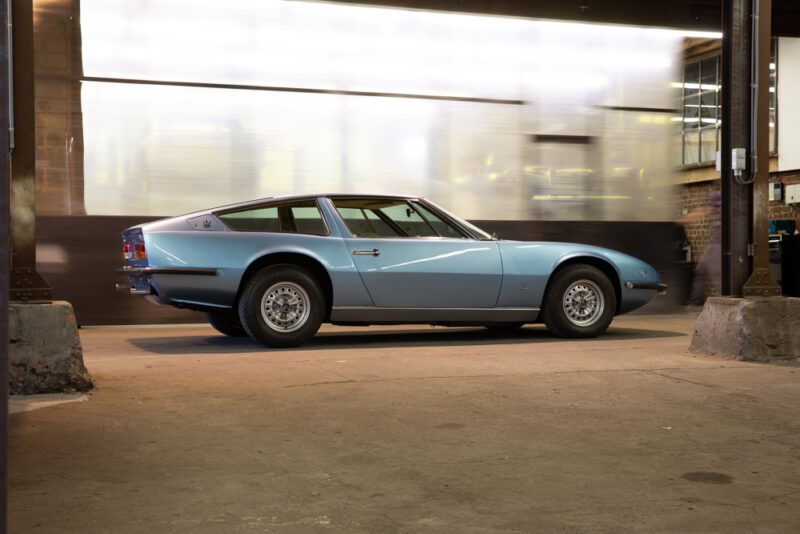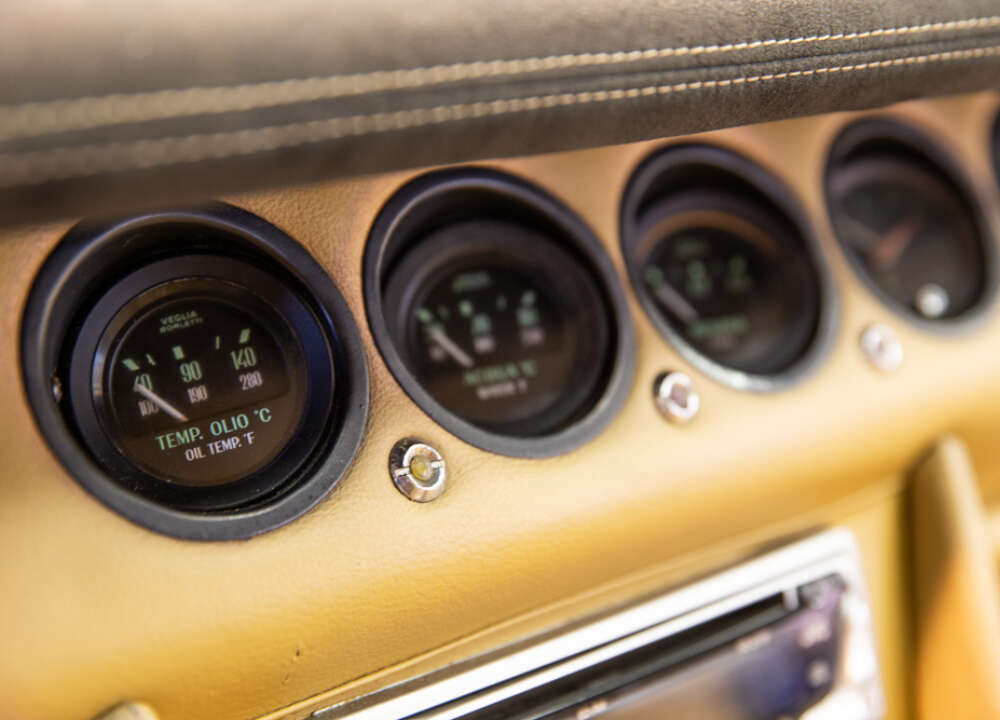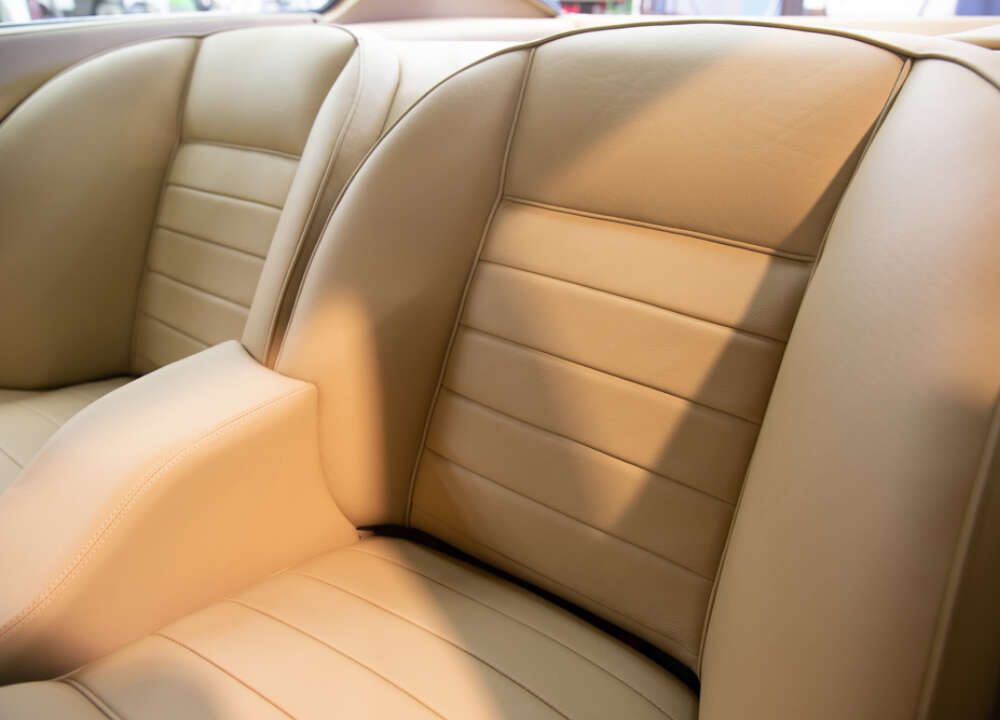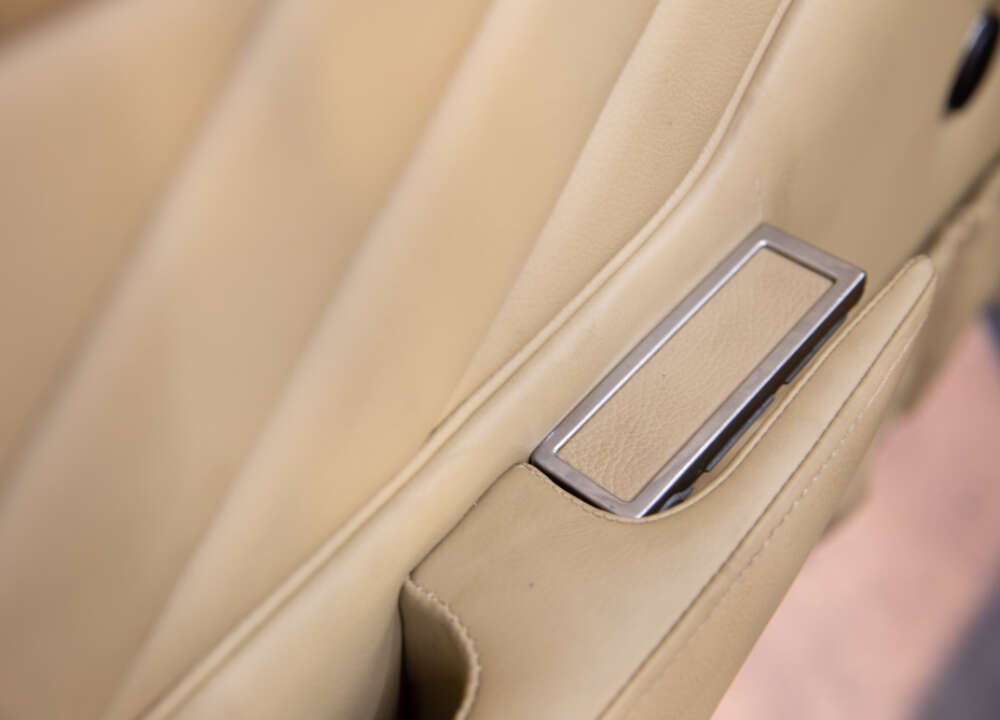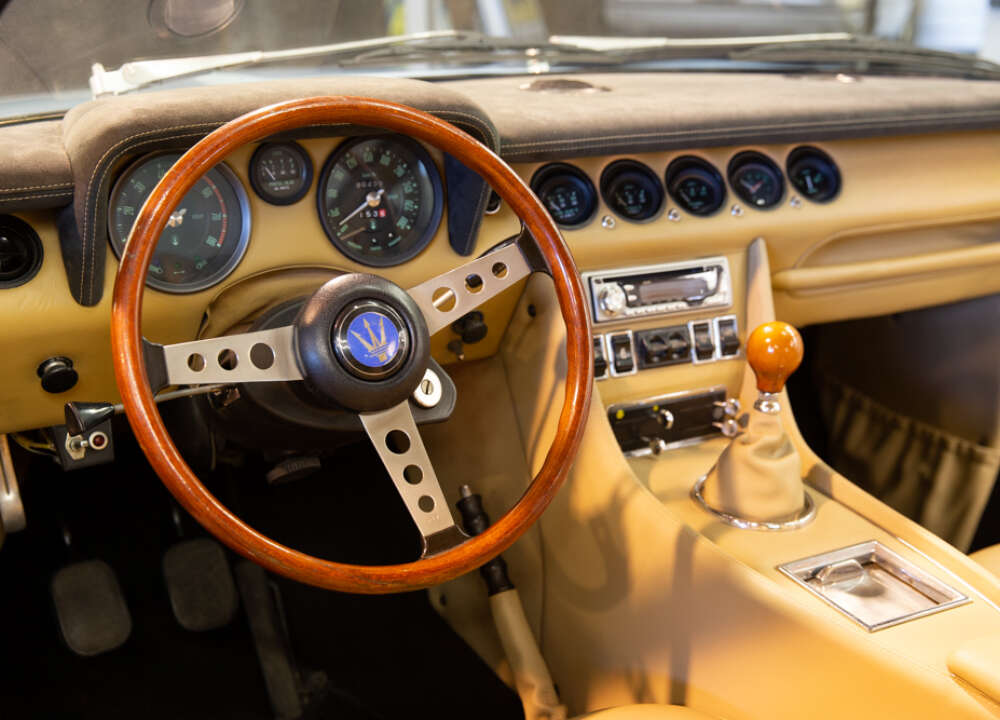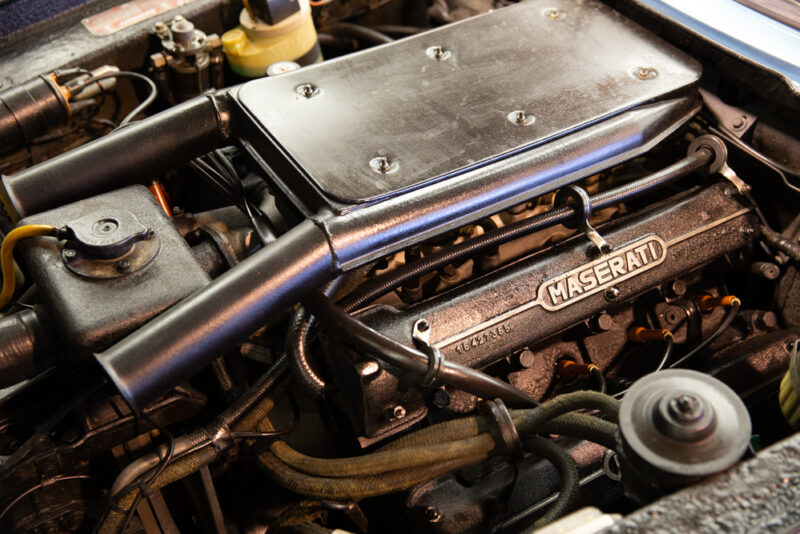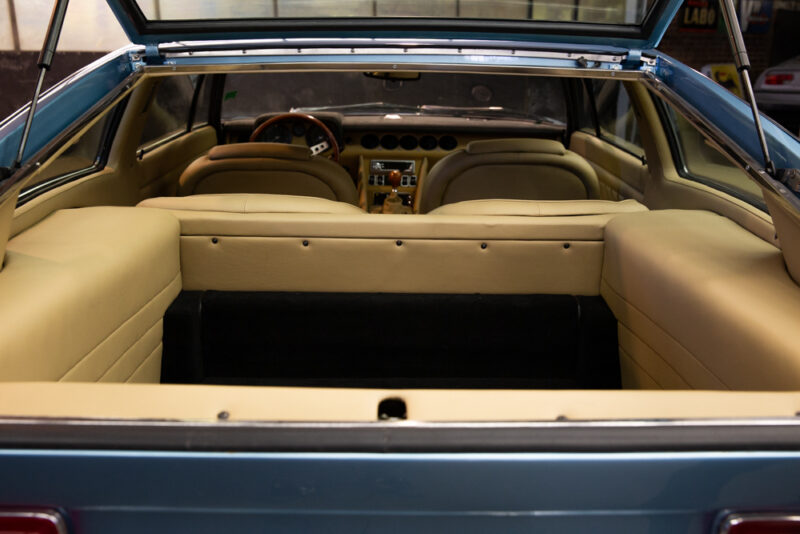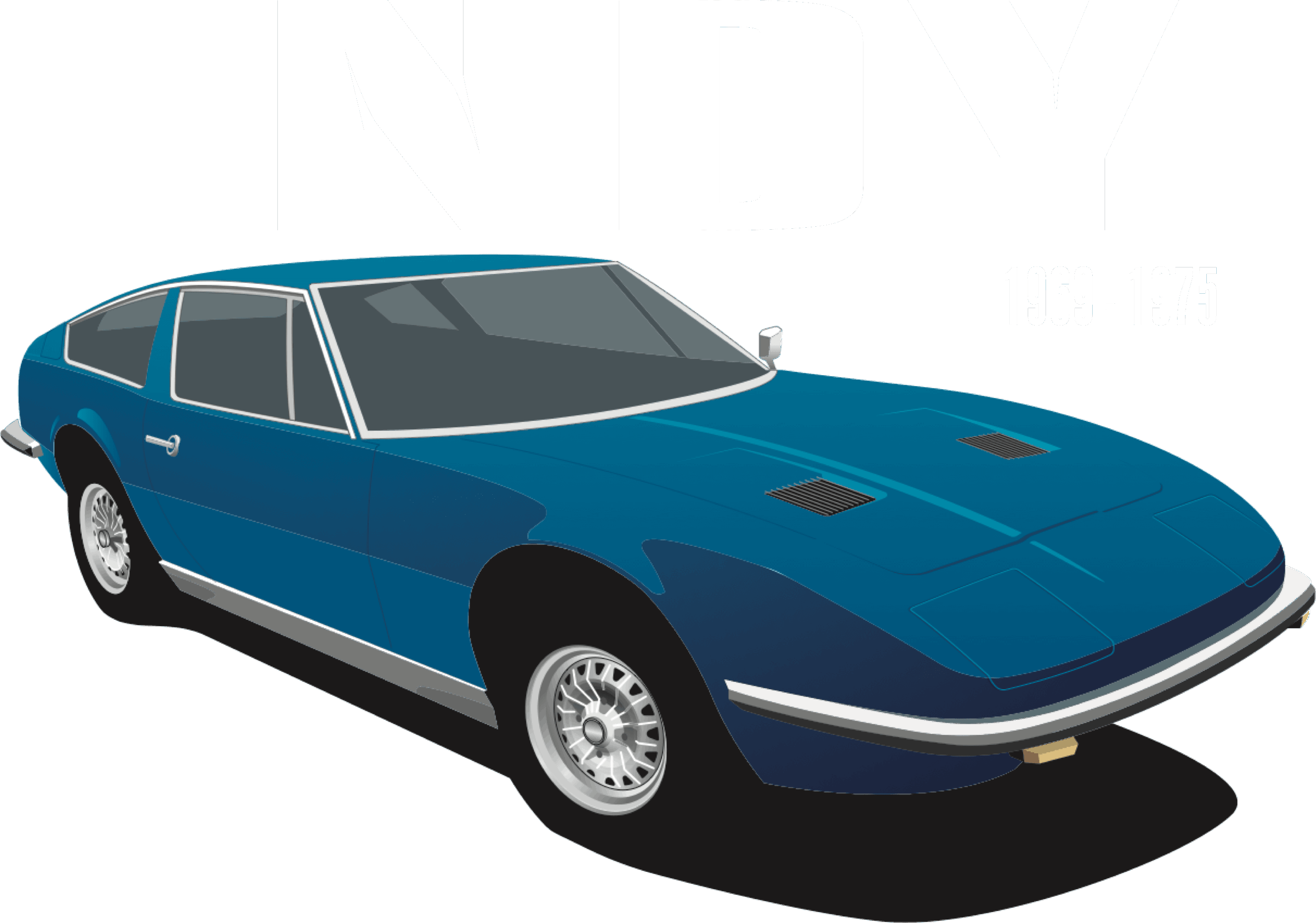
This quintessential Grand Tourer is combining room for four adults and a large trunk with a sleek, handsome design.
Introduced in 1969 and named after the 1939 and 1940 Indy 500 victories of Wilbur Shaw for Maserati, the Indy commemorated that historic triumph's thirtieth anniversary. The name was suggested by the then seventeen years old Adolfo Orsi junior, son of Omar and grandson of the eponymous factory owner Adolfo. The Indy was meant as a successor to the Maserati Mexico even though the latter was unexpectedly allowed to extend its production span by several years since it had faithful buyers among the more conservative Maseratisti.
The Trident went through a lot of design houses in those days as the Orsis and chief engineer Giulio Alfieri sought to define what the best style image would be for their offerings. After dealing with Frua, Bertone, Ghia in preceding years they chose Vignale for the Indy.
First introduced on the design house's stand at the 1968 Turin show, but not yet baptized, the Indy was very well received, its design was just right, a mix of elegance and suggested speed in a long, well-proportioned carrozzeria. It was reminiscent of but not related to the strictly two-seat Ghibli. Its first and greatest asset was that its design managed to conceal that it was a true four-seater, thus combining the sleek elegance of a two-seater with the practicality of two more proper ones with ample luggage space. Then in March 1969, the car and its name were officially launched at the Geneva show.
The Indy featured traditional architecture based on a shortened Quattroporte platform with the same separate subframe for the engine and front suspension as found on the Quattroporte. It used a front-mounted V8 and had four-wheel disc brakes. The front suspension was by way of double wishbones, coil springs while at the rear Maserati chose to stick to the tried, and tested leaf-sprung live axle with a control arm on each side. Anti-roll bars were fitted front and rear.
Most Indys were fitted with a ZF 5-speed gearbox, but a rare few were given a Borg-Warner 3-speed automatic.
Underlining the model's brief as meant for practical use was a hatchback type trunk opening which was far more convenient in terms of access than the low short trunk lid on the Ghibli. An option for the trunk was a blind-like retractable cover to shield belongings.
The Indy perfectly fit the bill for the busy businessman who travelled extensively on Europe's unlimited speed motorways (until 1973 when limits were introduced in most countries), be it for work or with his entire family.
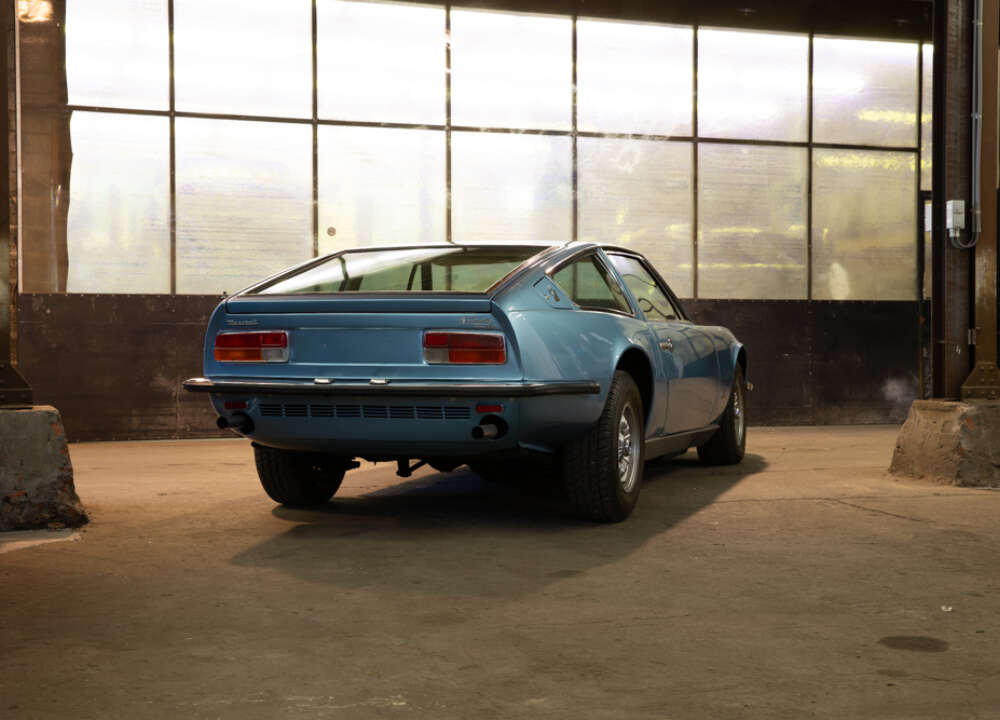
At the wheel, the driving position is more upright than in a Ghibli, but the driving experience is very similar.
During quick driving through tight corners, you sense that the engine is positioned ahead of the front wheels. The Indy is no go-kart and is more at ease on the Autostrada than a mountain pass. When you treat it with respect, and it performs very well for a car of that size and era.
Specifications
The Indy deserved success and got it with 1104 cars built, almost as many as the Ghibli. There were at first 436 4,2-litres built, then 367 4,7-litres and finally 299 of the 4,9-litres with and without hydraulics.
The 4,2 offered 260hp, while the 4,7 had 290hp and became available from 1970 starting at the Turin show. Then there was a dashboard change and a new appellation: Indy America for all versions starting in 1971. That same year the 4,9 version was introduced with 320hp. Finally, from 1973 onwards only the 4,9 remained available, and several upgrades were starting with a new, improved ZF gearbox. That final version received the Citroën LHM brakes, 15-inch wheels as opposed to 14-inch previously, improved air conditioning. That version can be recognized by an additional vent on the bonnet at the upper passenger corner. This is for enhanced cockpit ventilation. Ghibli Khamsin Campagnolo Starburst type wheels became standard. It is worth noting that the very first Maserati ever to carry hydraulic LHM system, as a test mule for the R & D department, was the early Indy company car of Maserati's administrator for Citroën: Guy Malleret.
Indys were used quite a lot in movies. Like "Herbie goes to Montecarlo" and the superb "The most wonderful evening in my life" (1972) in which Alberto Sordi in his Indy naively chases a blonde femme fatale on her motorcycle to a castle in the Dolomite mountains, having absolutely no idea what awaits him. Egyptian born star actor Omar Shariff owned Maseratis, and a late 4,9 Indy was used extensively in "Crime and passion" (1976). Famous owners included Polish Princess Sangusko and singer Richard Anthony.
1104 cars built between 1969 - 1975
available in 4.2-, 4.7- and 4.9-litre
Engine
V8, light-alloy block
4136 cc, 4719 cc for Indy 4700, 4930 cc for Indy 4900
Power output: 260 hp; 290 hp; 320 hp
Body
Two-door, four-seater Coupé, in steel.
Designed by Vignale
Performance
250 kph to 265 kph
Competitors
In contrast to sunny day two-seat toys all such Grand Touring four-seaters, whatever their make, were used extensively, hence many no longer exist. They were worn out, crashed, rusted out or parted out.
As different as they all are the Ferrari 365GT 2+2, its successor the 365GT4 2+2 (better known by the name of its subsequent evolution the 400GT) and the Lamborghini Espada were the other choices on offer to that era's 4 seater GT prospect.
The 365GT 2+2 or Queen Mary as it is nicknamed is indeed a grand dame, huge inside and out but rather ponderous to drive, very much happier on an Autostrada than on twisty roads where the others will say arrivederci. It will, however, cost you 100.000 Euros more than a good Indy...in the USA they sell for over $200K. The 365GT4 2+2 had a very successful timeless design, a gorgeous sounding engine with side draft Webers and is the only V12 Ferrari in the same price range as the Indy, though it is costlier to maintain.
The Espada certainly was avant-garde but had poor ergonomics, and its V12 is as exciting as it is fussy to maintain and costly to rebuild. Indeed many Espadas spent years in the wrong ownership, with lots of deferred maintenance and rust and are very complicated and expensive to restore.
It should be noted that whist the Maserati V8 with its low revving torquey nature suits automatic gearboxes to a tee, the Maranello and Sant'Agata V12's are really not suited to automatic gearboxes. The end result as you drive them is thus a feeling of clumsiness, of a lack of homogeneity - the marriage of the rabbit and the trout as one journalist put it -. In sharp contrast, if you are more into concours than spirited driving, an automatic Indy is a very palatable purchase in the reality of modern traffic and speed traps.
Valuation
A good Indy should be priced from Euro 60K to around Euro 80K while an exceptional late 4,9 with the added bonus of the hydraulic assistance would be worth paying Euro 120k for. When looking at Indys, the mechanical condition is important as with any car, but two other factors are also crucial. Firstly as they were driven a lot and have a body made in inferior quality steel, the bodies are more prone to rust than other Maseratis of that era. They typically were driven year-round including on roads salted in winter and parked outside. Therefore already in the 1980s, one could see some of them in terrible shape. It is vital to examine very carefully what sort of quality of work a car has had. Secondly, the nature of the Vignale design is that there is a lot of glass area meaning the interior with its four seats and acres of leather is very much in plain sight, subject to visual inspection by anyone curious. Well, this means that a ratty interior with torn, dried, stained and otherwise depressing looking upholstery is a huge turn off and will require a properly trained craftsman to renew.
We are aware that the valuation of this car is very subjective and depends on many criteria. That is why auctions are used as a barometer to sense where the market is moving. However, premium restored or preserved classic Maseratis change ownership through private sales (and seldom in an auction). As a result, rarely do we discover the price for an off-market transaction.
Persuasion
That being said, there are good Indys out there. Do your due diligence before you head out to examine it or hire someone to inspect it. What do you have when you acquire a good Indy? No other Maserati can compete with it for representing the quintessential Gran Turismo. A beautiful, sleek, low yet comfortable Berlinetta that allows you to leave London, Amsterdam or Hamburg in the morning with your three passengers and luggage and arrive relaxed, happy on the Cote d'Azur ready to dine and dance all night. Indys are very enjoyable and sure-footed to drive, and the Maserati V8 is undeniably more robust, reliable and economical to maintain than its twelve-cylinder neighbours from Emilia Romagna.
Initial texts by Marc Sonnery.
Registry
This registry is in the hands of the Classiche Masters team and was first started in June 2020. So If you happen to have information about these cars please mail info@classichemasters.com or go to
https://join.classichemasters.com/c/Indy-Registry/. A one-time registration is required.

